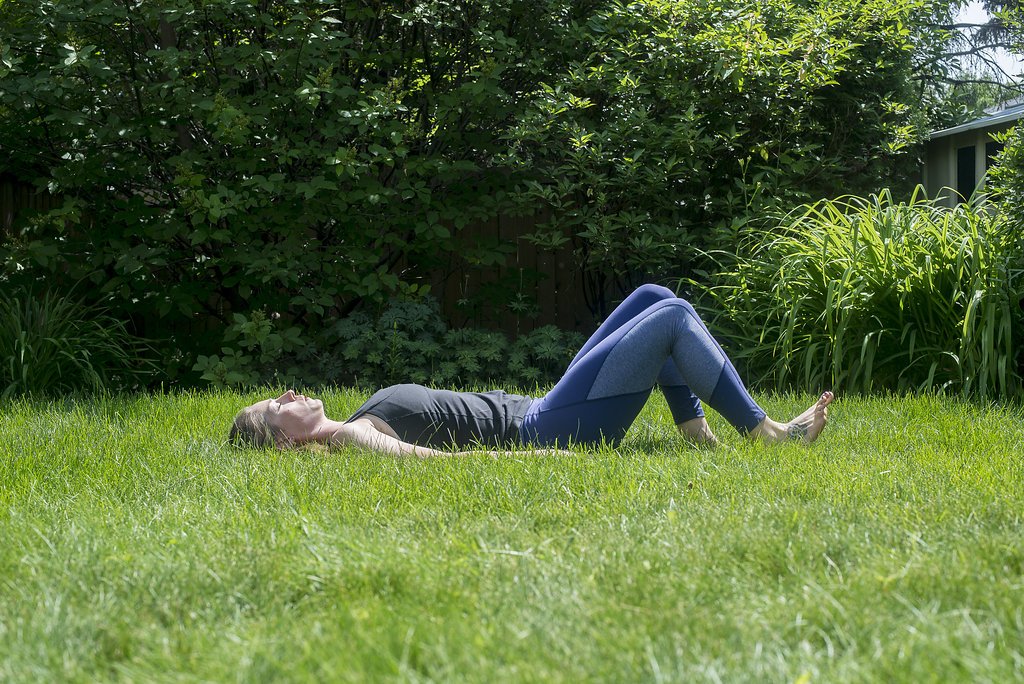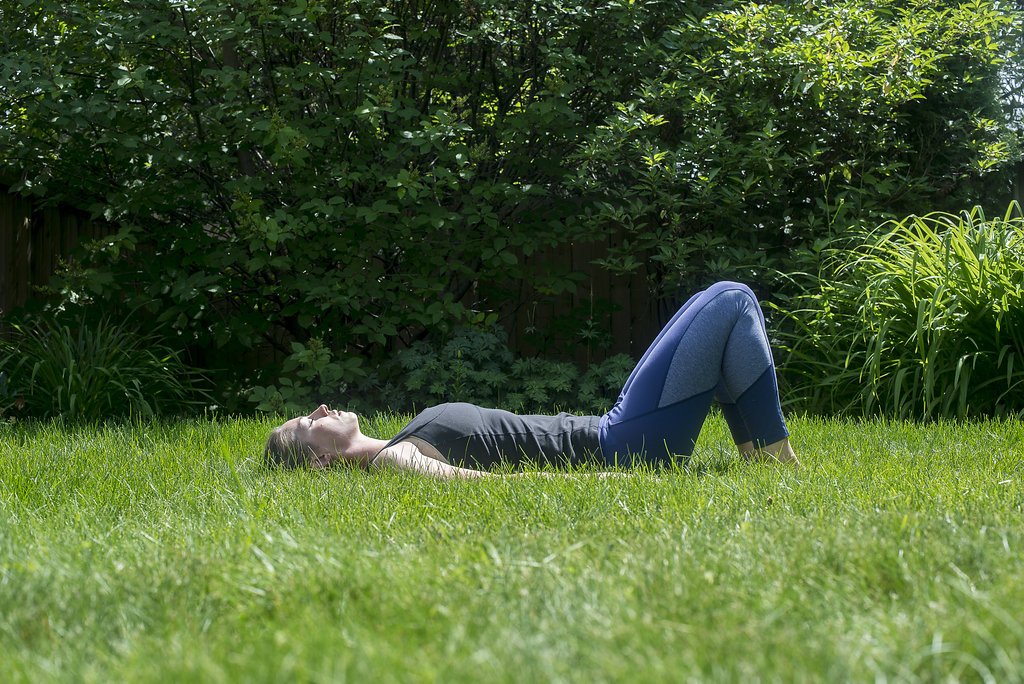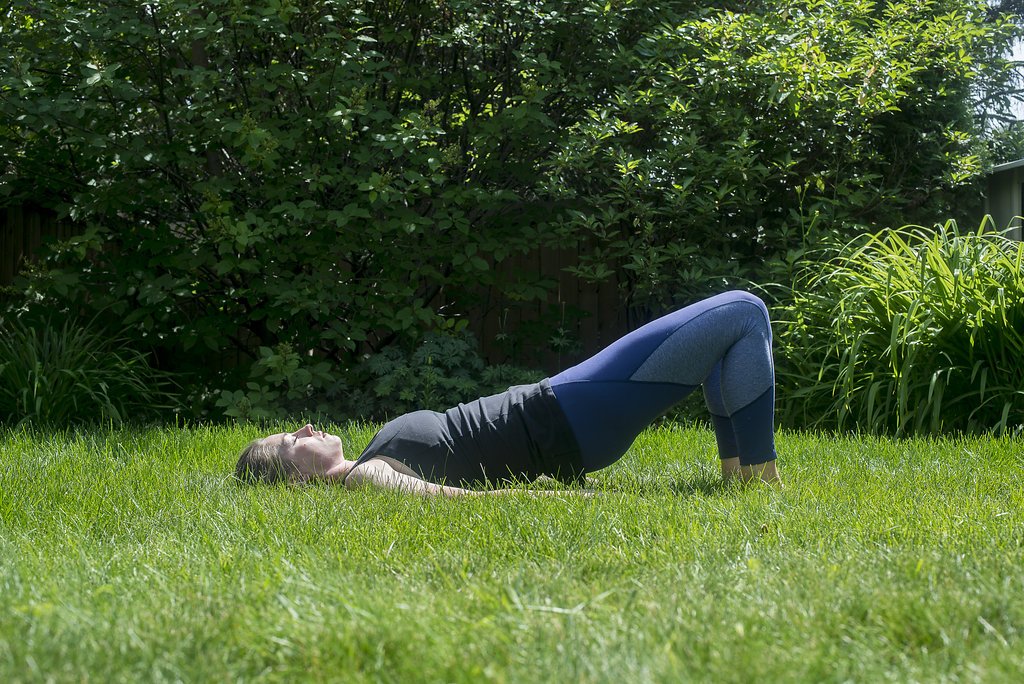Getting back into exercise after baby- take care of your pelvic floor!
This article was originally published in YEG Fitness. You can read it here.
As many women are, I was eager to get back to exercise after my first child was born. I attended my first mom and baby boot camp when my daughter was 5 weeks old. There were burpees, sprints, push-ups, and planks. My competitive nature was hooked. I also started running and did a 10 km race on Mother’s Day, less than 4 months after giving birth.
Looking back, it is no surprise that I leaked urine while exercising, had achy joints and painful sex, and suffered a pretty major back injury at 8 months postpartum.
No one told me that exercise for a new mom should be any different. I didn’t know that all of my hard work running and attending boot camps was actually preventing my pelvic floor and core from being strong and effective.
The core and pelvic floor
Your core is so much more than your 'abs'
Your core is not just your abs. For a strong, well-functioning core, your abdominals, diaphragm, back and pelvic floor muscles all must be working synergistically. For many new moms this is not the case, creating an increased load on the pelvic floor. This often leads to incontinence, painful sex and/or prolapse of the pelvic organs.
The pelvic floor muscles support the internal organs as shown here.
Don't make the mistakes I did! Learn about your post partum body and exercise to help heal so that years down the road you will still be strong, fit and feeling great.
Guidelines for exercise after baby
1) Wait to run
Walking is a great way to get moving and add cardiovascular exercise. Running creates downward pressure that the pelvic floor is not ready to handle in early postpartum (whether your delivery was vaginal or cesarean). I don’t recommend running until 5-6 months postpartum, and that is only if there are not any issues in the core/pelvic floor.
· Add 10 minutes of outside walking (fresh air and sunshine help with mood and anxiety) most days, as soon as you feel up to it. You can add a couple minutes every few days until you are walking 30ish minutes a day.
2) Choose the right exercises
Begin core and pelvic floor strengthening as early as you feel up to it, but be sure to keep the pressure off the pelvic floor. Sitting and lying exercises will be best in the early days/weeks. Avoid crunches, sit-ups, v-sits, prone positions (push-ups and planks), jumping and holding exercises for an extended time (ex. wall-sit).
Here are three exercises to start with:
1. Breathing for healing
With one hand on your lower ribs and one hand on your belly, take a deep inhale. Feel your ribs, belly and pelvic floor all expand. It may be hard to feel your pelvic floor at first, be patient. The connection will return with practice. Exhale and feel your ribs and belly contract while your pelvic floor lifts slightly. Repeat 10 times, 1- 2 times a day.
2. Heal Slides
Starting on your back (modify with pillows if needed) take a deep inhale. Exhale and feel your pelvic floor gently lift towards your chest as you slide your heel and extend your leg. Inhale, feeling your pelvic floor relax. Exhale with a gentle pelvic floor lift and bring your knee back up. Repeat on the other side. Do 10ish repetitions on each side, 5-7 times a week.
3. Glute Bridges
Glute (bum) strength is key to core and pelvic floor health. Start on your back with your heels close to your bum. Exhale and feel your pelvic floor lift gently as your push through your heels and lift off the ground. Only go as far as you can without tucking your tailbone under. Inhale as you release your pelvis to the floor. Do 10ish repetitions on each side, 5-7 times a week.
I also recommend all women make an appointment with a women’s health physiotherapist after birth. They can fully assess your pelvic floor muscles, screen for prolapse, and make sure you are doing a kegal correctly.
Above all, rest and patience should be your top priorities. Everyone is different, but the pelvic floor usually needs about 6 months to recover.
Congrats Mama, motherhood is one of the most amazing challenges you will ever face. You are doing great!







